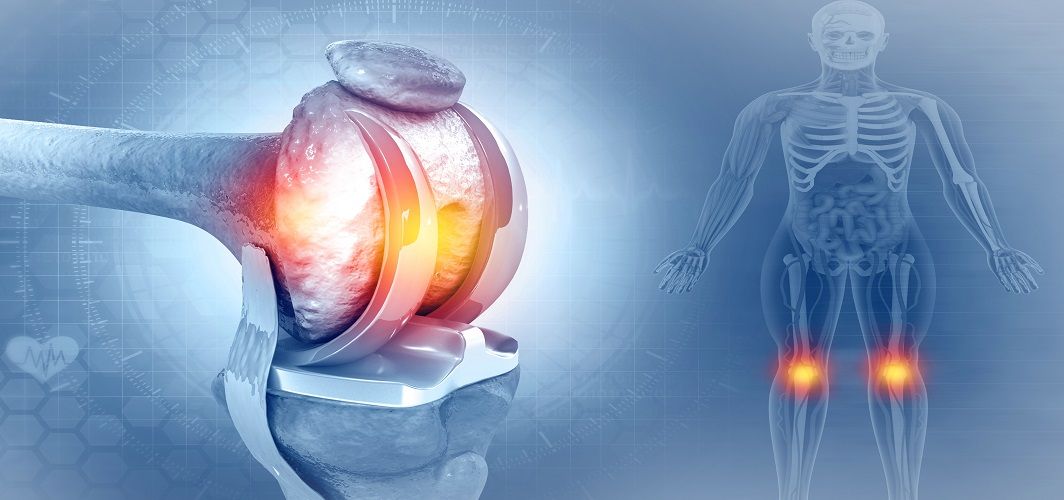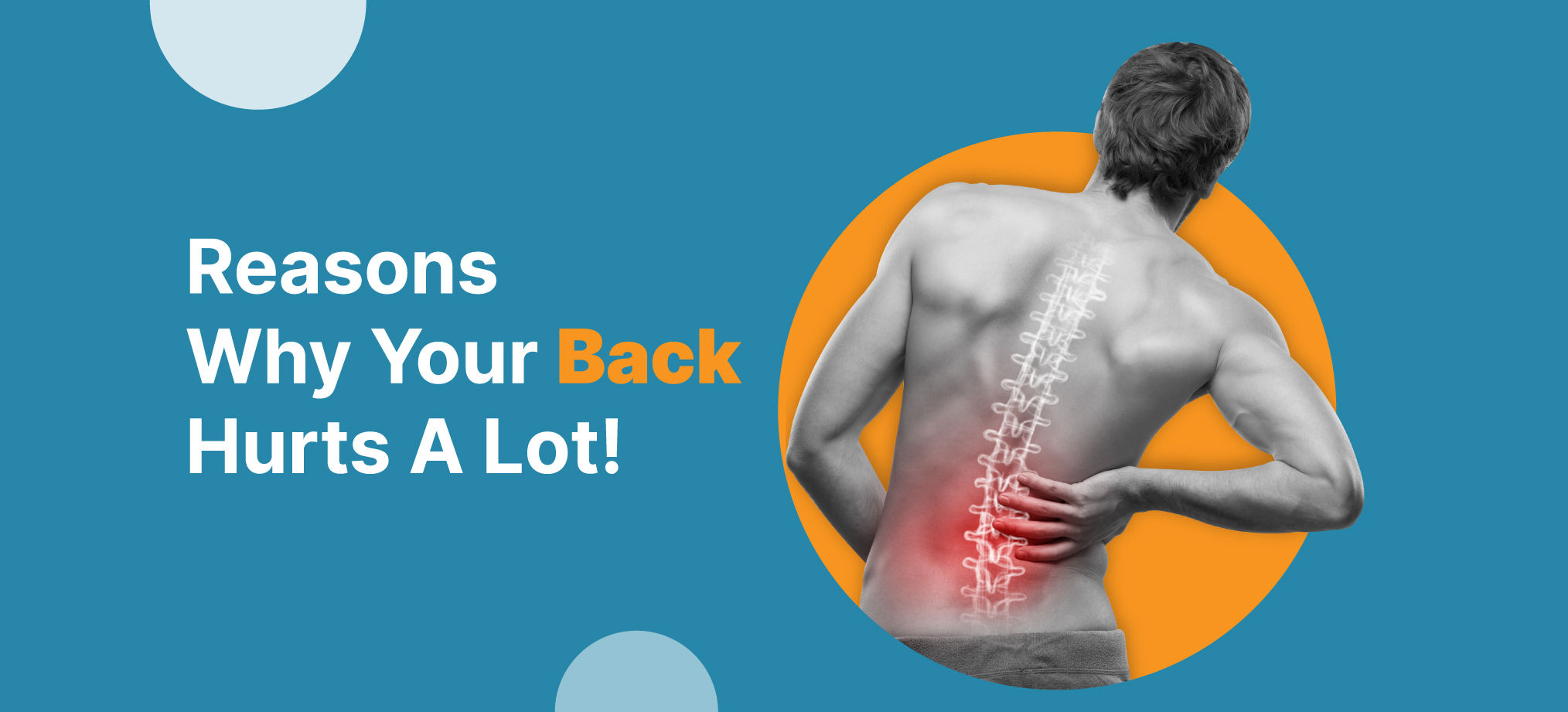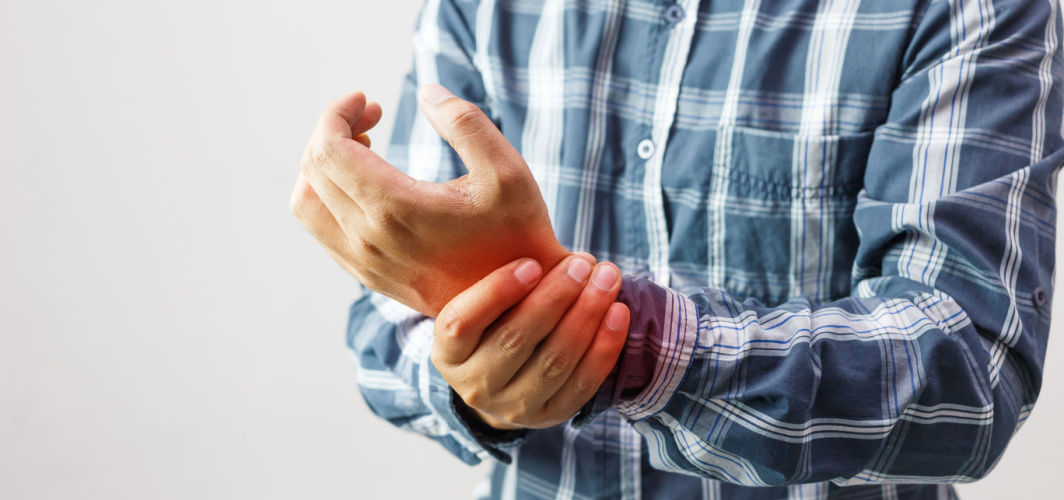Orthopedic Conditions
Watch out for These Early Signs of Arthritis
5 min read
By Apollo 24/7, Published on - 21 February 2022, Updated on - 14 July 2023
Share this article
1
144 likes

The characteristic feature of arthritis is a swollen joint. However, pain, stiffness, and discomfort that occur too frequently may indicate arthritis. In fact, early signs of arthritis are often overlooked and mistaken for an injury or strain. In this article, we will understand some of the early symptoms of arthritis and how to manage it.
What is arthritis?
Arthritis is a common disorder affecting the joints, causing pain and inflammation of one or more joints. As the condition progresses, it can cause difficulty in moving the joint and staying active. Arthritis occurs more frequently in the joints of feet, hands, hips, lower back, and knees. There are several types of arthritis, each causing different symptoms and requiring different treatment approaches.
Types of arthritis
Some types of arthritis may occur due to natural wear and tear while others may result from autoimmune diseases or inflammatory conditions. The most common types of arthritis include:
- Osteoarthritis: Also known as wear and tear arthritis, it occurs when the cartilage of the joints breaks down due to repetitive stress.
- Rheumatoid arthritis: In this condition, the immune system attacks the synovial membrane in the joints.
- Psoriatic arthritis: This type of arthritis occurs in people with a skin condition called psoriasis.
- Gout: When uric acid crystals are deposited in the joints, it results in a condition known as gout.
- Ankylosing spondylitis: This refers to arthritis of the spine, and usually involves the lower back.
Recommended Read: Are Women at Higher Risk of Developing Rheumatoid Arthritis?
Early signs of arthritis
In the early stages, arthritis can go undetected. Hence, it is crucial to watch out for early arthritis symptoms to make a quick diagnosis.
-
Joint pain
Joint pain from arthritis may be constant or sporadic. Pain may occur while moving the joint or during rest, and may affect one or more joints.
-
Stiffness
Stiffness is a classic symptom of arthritis. It mostly occurs while waking up in the morning or when one has to sit down for long hours. Arthritis can be suspected if morning stiffness lasts for more than an hour.
-
Swelling
Some forms of arthritis cause redness and swelling of the skin over the affected joint and a feeling of warmth to the touch. If the swelling lasts for three days or longer, or occurs more than three times a month, it could indicate arthritis.
-
Difficult joint movement
There may be a decrease in the range of motion of the joint. One may find it difficult or painful when getting up from a chair.
Symptoms specific to the type of arthritis:
-
Pain in the big toe
Pain in the big toe is common in gout arthritis and the toe may also feel warm to the touch. Though gout can affect other parts of the body, it commonly affects the big toe.
-
Finger bumps
Bumps on the finger joints can occur in both osteoarthritis and rheumatoid arthritis. In osteoarthritis, bone spurs (extra bone formation around the joint) occur when the cartilage wears off. In rheumatoid arthritis, bony bumps occur on the feet and hands.
-
Fatigue
Fatigue can generally occur because of sleep deprivation. However, it can be a sign of rheumatoid arthritis when accompanied by weight loss, fever, and loss of appetite.
-
Red and patchy skin
Signs of arthritis along with itchy and scaly red patches on the skin that are mostly covered by flaky white scales may indicate psoriatic arthritis.
Causes of arthritis
Depending on the type of arthritis, the causes can vary. For instance, gout is caused by excessive uric acid in the body. For some types of arthritis, the causes are unknown. The risk of developing arthritis may increase if one:
- Has a family history of arthritis
- Has a job or plays sports that cause repetitive stress on the joints.
- Has a viral infection
- Suffers from certain autoimmune conditions
Some other factors that may increase the risk of developing arthritis include:
- Age: The risk increases with age.
- Lifestyle: Factors like lack of physical activity and smoking can increase the risk.
- Gender: Arthritis is known to be more common in females.
- Weight: Being overweight can cause additional stress on the joints leading to arthritis.
Lifestyle modifications and home remedies for arthritis
The symptoms of arthritis can be reduced by following a few tips that include:
- Losing weight: Too much body weight can put excess stress on the weight-bearing joints. Hence, losing weight can increase mobility and prevent future joint injuries.
- Exercising regularly: Exercise helps to keep the joints flexible. Exercises such as swimming and water aerobics are good options as the buoyancy of the water reduces pressure on the weight-bearing joints.
- Balancing activity with rest: Along with staying active, it is important to rest the joints and let them recover.
- Applying heat and cold therapy: Using heating pads or ice packs at the affected joint sites can alleviate arthritis pain.
- Using assistive devices: The use of assistive devices such as canes, walkers, and raised toilet seats can protect the joints and assist in performing daily activities.
- Consuming a healthy diet: Eating a well-balanced, healthy diet can help in achieving a healthy weight and reduce inflammation. One can consider foods containing anti-inflammatory properties and are high in antioxidants.
Recommended Read: Natural Ways to Get Relief from Arthritis
Prevention of arthritis
One can decrease the risk of developing arthritis by:
- Quitting smoking
- Performing low-impact exercises (non-weight bearing)
- Avoiding or reducing the risk of injuries to the joint
- Maintaining an ideal body weight
Conclusion
If one notices pain, swelling, or stiffness that lasts longer than a few days or occurs repeatedly, it is important to consult the doctor and get a proper diagnosis. Early diagnosis and management can minimize the impact of arthritis on the quality of life. There is no cure for arthritis, and the focus of treatment is to slow the progression of the disease and control the symptoms. This helps to decrease the severity of the disease and preserve joint function.
For any queries on arthritis, you can consult an Orthopedician.
Orthopedic Conditions
Leave Comment
Recommended for you

Orthopedic Conditions
A Complete Guide on Knee Replacement Surgery
Knee replacement surgery involves removing damaged or worn-out parts of the knee joint and replacing them with artificial components. The procedure typically takes a few hours and is performed under general anaesthesia.

Orthopedic Conditions
Backache: An Every Day Menace You Want To Get Rid Of!
Backache is an extremely common problem seen in adults, especially the ones working in front of laptops the entire day. Read to know how you can get rid of backache easily.

Orthopedic Conditions
Rheumatoid Arthritis (RA): Symptoms, Risk Factors, Diagnosis, Treatment & Complications
Rheumatoid arthritis (RA) is an autoimmune disease that causes joint pain, swelling, and stiffness. Discover the symptoms, risk factors, diagnostic methods, and potential complications associated with RA for effective management of the chronic health condition.
Subscribe
Sign up for our free Health Library Daily Newsletter
Get doctor-approved health tips, news, and more.
Visual Stories

Natural Ways to Get Relief from Arthritis
Tap to continue exploring
Recommended for you

Orthopedic Conditions
A Complete Guide on Knee Replacement Surgery
Knee replacement surgery involves removing damaged or worn-out parts of the knee joint and replacing them with artificial components. The procedure typically takes a few hours and is performed under general anaesthesia.

Orthopedic Conditions
Backache: An Every Day Menace You Want To Get Rid Of!
Backache is an extremely common problem seen in adults, especially the ones working in front of laptops the entire day. Read to know how you can get rid of backache easily.

Orthopedic Conditions
Rheumatoid Arthritis (RA): Symptoms, Risk Factors, Diagnosis, Treatment & Complications
Rheumatoid arthritis (RA) is an autoimmune disease that causes joint pain, swelling, and stiffness. Discover the symptoms, risk factors, diagnostic methods, and potential complications associated with RA for effective management of the chronic health condition.